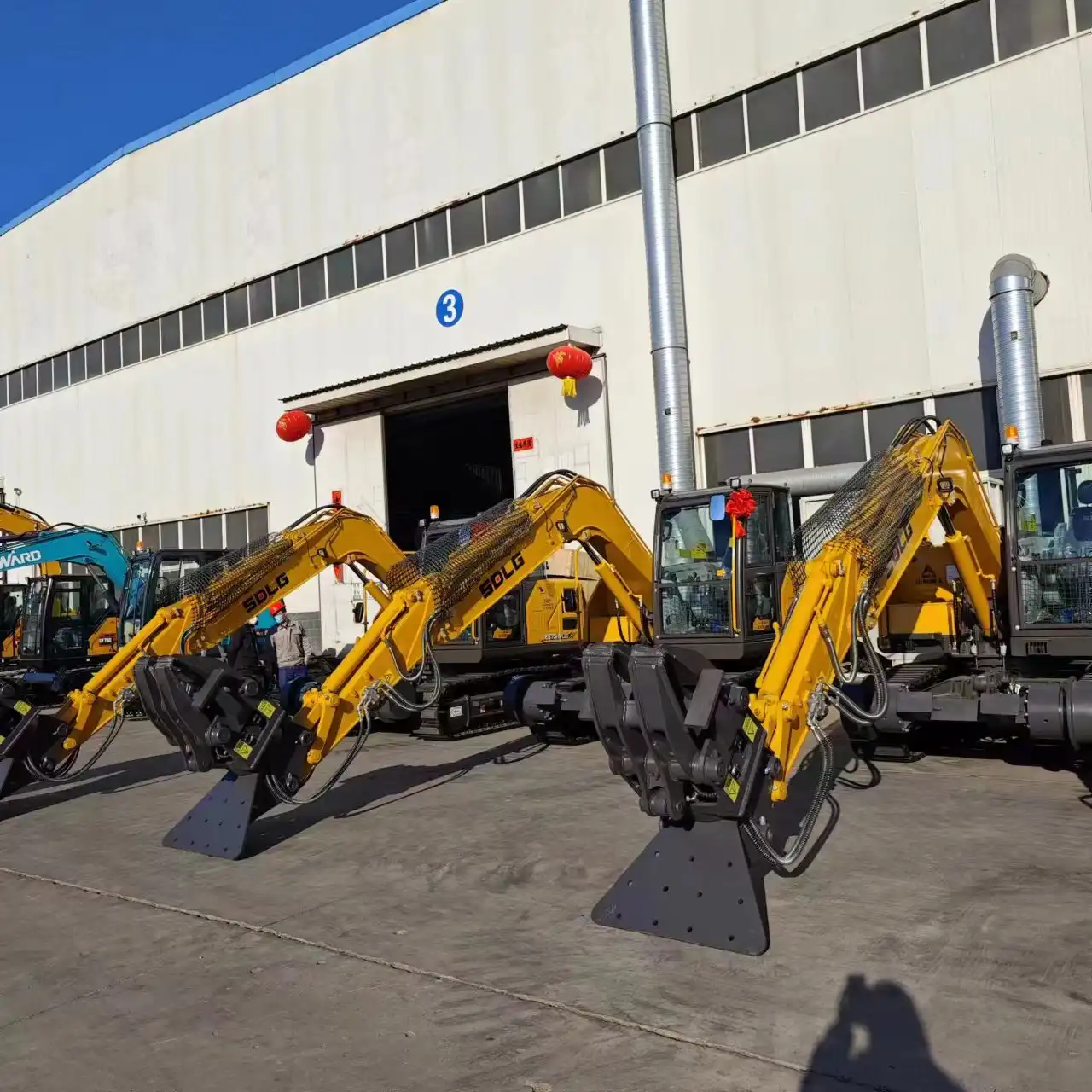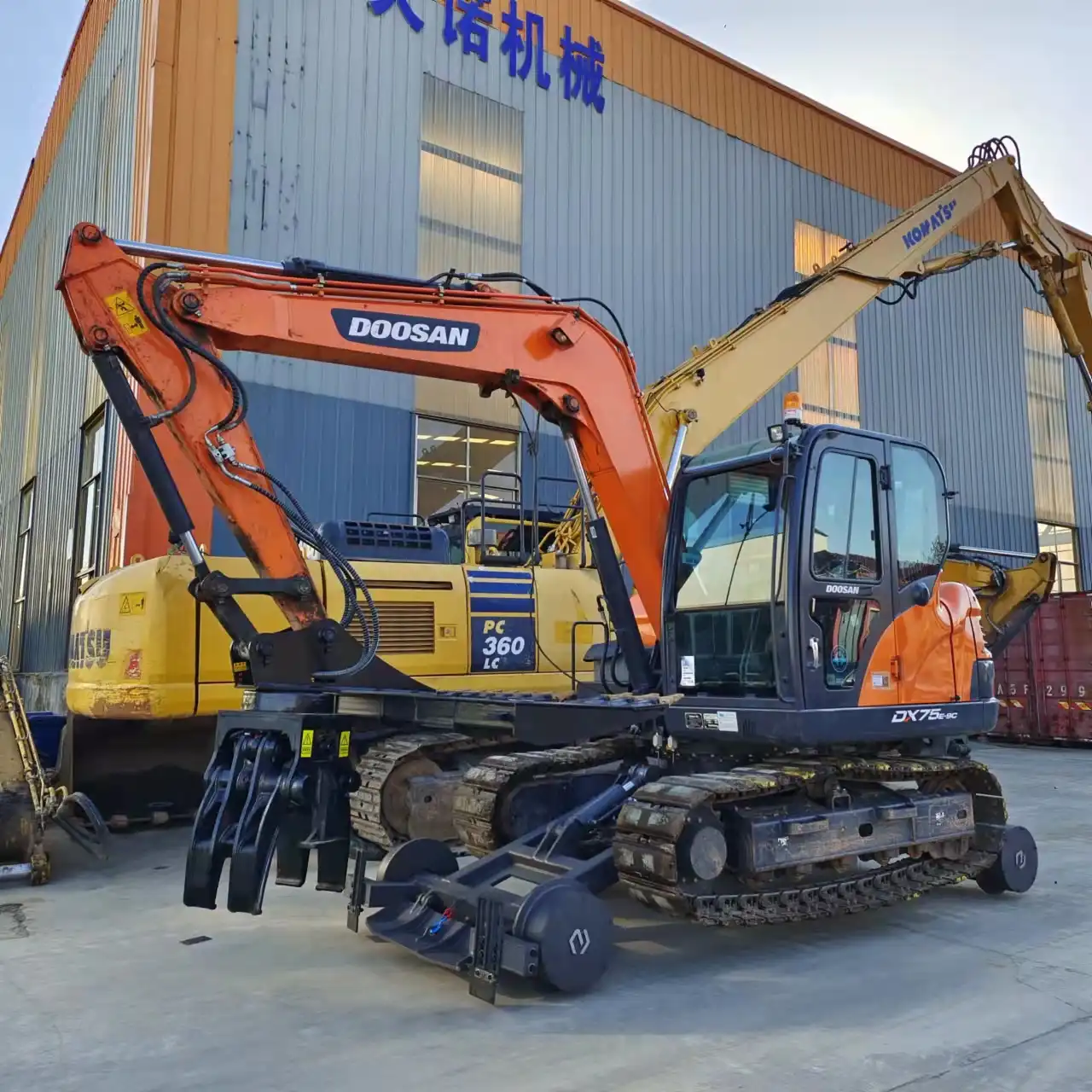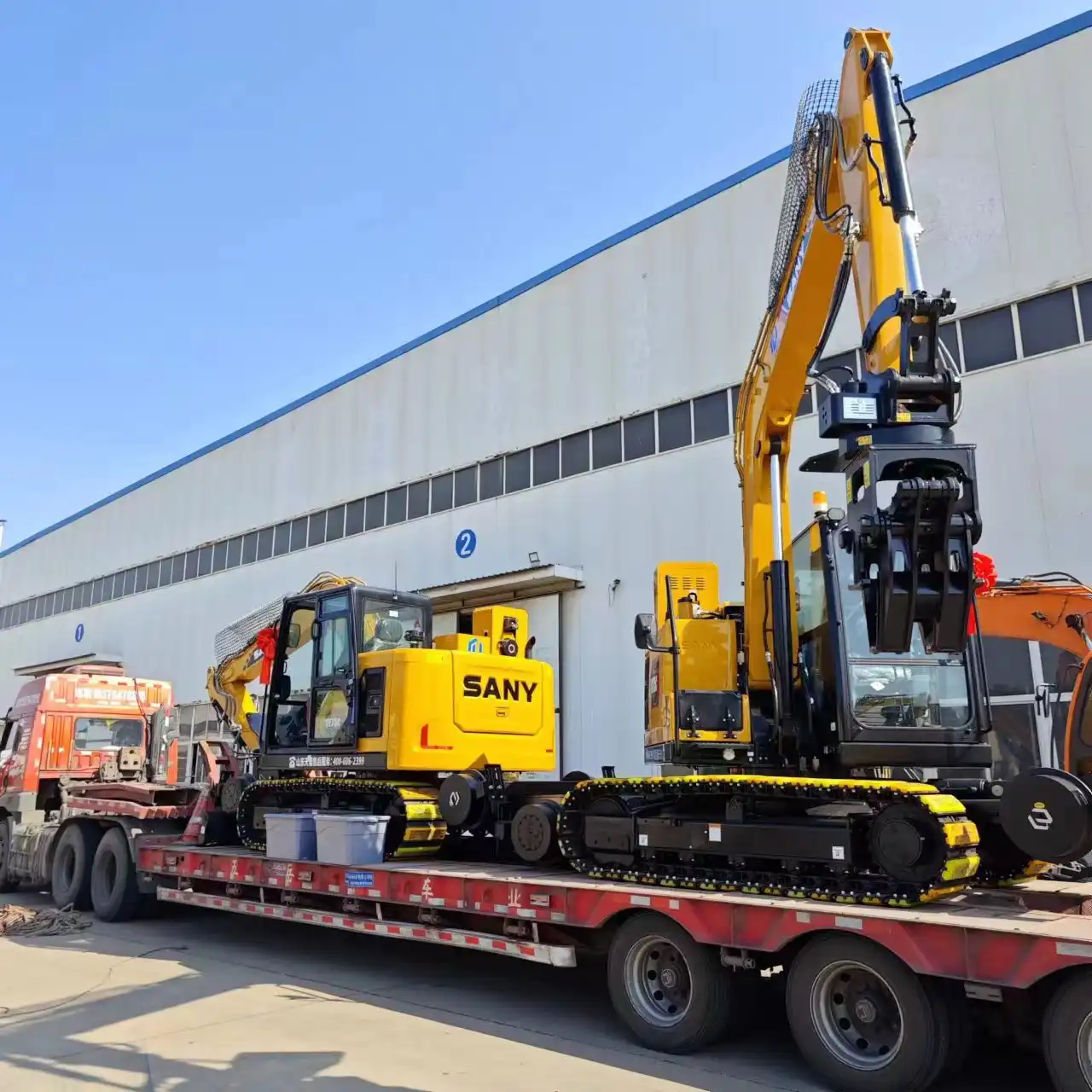Railway Sleeper Changer Hydraulic Specs
Railway sleeper changers are essential machines in track maintenance, utilizing advanced hydraulic systems for efficient and precise sleeper replacement. This specialized equipment plays a crucial role in ensuring railway infrastructure safety and operational continuity. Understanding the hydraulic specifications of sleeper changers is vital for railway maintenance teams, construction companies, and equipment managers.

Key Hydraulic Components Explained
Hydraulic Cylinders: Power and Precision in Action
Hydraulic cylinders are the muscles of railway sleeper changers. These robust components convert fluid pressure into linear force, enabling the machine to lift, position, and replace sleepers with remarkable accuracy. Modern sleeper changers typically feature multiple cylinders, each designed for specific tasks such as gripping, lifting, and aligning sleepers.
The cylinder's bore size, stroke length, and operating pressure are critical specifications that determine its power and range of motion. For instance, a larger bore size increases the cylinder's force output, while a longer stroke allows for greater reach and flexibility during sleeper replacement operations. High-quality seals and wipers in these cylinders ensure smooth operation and prevent contamination, crucial for maintaining performance in dusty railway environments.
Pumps and Valves: The Heart of Sleeper Changers
Hydraulic pumps and valves form the circulatory system of sleeper changers. Pumps generate the necessary fluid flow and pressure to power the cylinders, while valves control the direction, pressure, and flow rate of the hydraulic fluid. Variable displacement pumps are often preferred in sleeper changers for their ability to adjust output based on demand, improving energy efficiency and reducing wear on components.
Directional control valves, pressure relief valves, and flow control valves work in concert to ensure precise control over the machine's movements. Advanced sleeper changers may incorporate electronically controlled valves, allowing for programmable operations and finer control over sleeper placement. This level of precision is essential for maintaining correct track geometry and ensuring long-term rail stability.
Hydraulic Fluid: Choosing the Right Type for Efficiency
Selecting the appropriate hydraulic fluid is crucial for the optimal performance and longevity of sleeper changers. The fluid not only transmits power but also lubricates moving parts, dissipates heat, and protects against corrosion. High-quality, high-viscosity index fluids are typically recommended for their ability to maintain consistent performance across a wide temperature range, a critical factor in varied railway environments.
Biodegradable hydraulic fluids are gaining popularity in the railway industry due to environmental concerns. These fluids offer comparable performance to traditional mineral-based oils while reducing the environmental impact of potential leaks or spills. When specifying hydraulic fluids for sleeper changers, factors such as operating temperature range, viscosity, and compatibility with seal materials must be carefully considered to ensure reliable operation and extended service intervals.

Optimizing Hydraulic Performance in Changers
Pressure Control: Balancing Power and Safety
Effective pressure control is paramount in railway sleeper changers, striking a balance between power delivery and system safety. Pressure relief valves act as safety mechanisms, preventing overpressurization that could damage components or compromise operator safety. These valves are typically set to open at a predetermined pressure level, redirecting excess fluid flow back to the reservoir.
Pressure-compensated pumps offer an additional layer of efficiency and control. These sophisticated pumps adjust their output based on system demand, maintaining constant pressure while varying flow. This feature not only enhances the sleeper changer's responsiveness but also contributes to energy savings and reduced wear on hydraulic components.
For precise sleeper handling, load-sensing systems are increasingly being incorporated into modern changers. These systems dynamically adjust hydraulic pressure based on the actual load, ensuring optimal force application during lifting and positioning tasks. This level of control is particularly beneficial when dealing with sleepers of varying weights or in complex track geometries.
Flow Rate Optimization for Smooth Sleeper Replacement
Optimizing flow rates is crucial for achieving smooth and efficient sleeper replacement operations. Flow control valves play a key role in regulating the speed of hydraulic actuators, ensuring controlled movements during critical phases such as sleeper extraction and insertion. Proportional flow control valves offer even greater precision, allowing for variable speed control that can be adjusted on-the-fly to match specific operational requirements.
Hydraulic accumulators are often integrated into sleeper changer systems to manage flow fluctuations and absorb shock loads. These devices store pressurized fluid, releasing it as needed to supplement pump output during high-demand situations. This not only smooths out hydraulic system performance but also allows for the use of smaller pumps, contributing to overall machine efficiency and compactness.
Advanced sleeper changers may employ multi-pump systems, with dedicated pumps for different functions. This configuration allows for simultaneous operations, such as lifting and aligning sleepers, without compromising flow to any single function. The result is a more efficient workflow and reduced cycle times for sleeper replacement tasks.
Temperature Management in Hydraulic Systems
Effective temperature management is critical for maintaining the performance and longevity of hydraulic systems in railway sleeper changers. Excessive heat can degrade hydraulic fluid, damage seals, and reduce overall system efficiency. Coolers are essential components in managing hydraulic fluid temperatures, especially in machines operating in hot climates or under heavy workloads.
Modern sleeper changers often incorporate thermostatically controlled cooling systems that activate only when necessary, conserving energy and extending component life. These systems may include oil-to-air or oil-to-water heat exchangers, depending on the specific operating environment and cooling requirements.
Proper reservoir design also plays a crucial role in temperature management. Adequately sized and well-ventilated reservoirs help dissipate heat and allow entrained air to escape from the hydraulic fluid. Some advanced designs include baffles or diffusers to promote fluid circulation and enhance cooling efficiency.

Troubleshooting Common Hydraulic Issues
Identifying and Fixing Hydraulic Leaks in Changers
Hydraulic leaks are among the most common issues faced by railway sleeper changers. These leaks can range from minor seepage to significant fluid loss, impacting performance and potentially causing environmental concerns. Regular visual inspections are crucial for early detection, focusing on areas such as cylinder seals, hose connections, and valve bodies.
Ultrasonic leak detectors have become valuable tools in pinpointing elusive leaks, especially in hard-to-reach areas of the machine. These devices can detect the high-frequency sound produced by fluid escaping under pressure, allowing maintenance teams to locate and address leaks before they become severe.
When addressing leaks, it's essential to identify the root cause rather than simply replacing components. Factors such as improper assembly, excessive pressure, or contamination can contribute to seal failures. Implementing a comprehensive preventive maintenance program, including regular fluid analysis and component inspections, can significantly reduce the occurrence of hydraulic leaks in sleeper changers.
Overheating Problems: Causes and Solutions
Overheating in hydraulic systems can lead to premature fluid breakdown, increased wear on components, and reduced overall efficiency of the sleeper changer. Common causes include insufficient fluid levels, clogged filters, or malfunctioning cooling systems. Regular monitoring of fluid temperatures through built-in sensors or infrared thermography can help detect overheating issues early.
Solutions to overheating problems often involve a multi-faceted approach. Ensuring proper fluid levels and replacing clogged filters are basic yet essential steps. For more persistent issues, upgrading to higher-capacity coolers or implementing additional cooling mechanisms may be necessary. In some cases, redesigning hydraulic circuits to reduce pressure drops or incorporating bypass valves can help alleviate overheating problems.
Implementing condition monitoring systems that track fluid temperature, viscosity, and contamination levels can provide valuable insights into the health of the hydraulic system. These systems can alert operators to potential overheating issues before they cause significant damage, allowing for proactive maintenance and minimizing downtime.
Noise Reduction in Hydraulic Sleeper Changer Systems
Excessive noise in hydraulic systems can be both a nuisance and an indicator of underlying issues. Common sources of hydraulic noise include cavitation in pumps, turbulent flow in valves and lines, and vibration of components. Addressing these issues not only improves operator comfort but can also extend the life of hydraulic components.
Incorporating accumulators into the hydraulic system can help dampen pressure pulsations and reduce noise. Properly sized and located accumulators can significantly smooth out system operation, particularly during rapid changes in demand. Additionally, using flexible hoses instead of rigid pipes in certain areas can help isolate vibrations and reduce noise transmission.
Advanced pump designs, such as those with helical gears or variable displacement mechanisms, can offer quieter operation compared to traditional designs. When specifying or upgrading sleeper changers, considering the noise characteristics of hydraulic components can lead to a more environmentally friendly and operator-friendly machine.
Where to Buy Railway Sleeper Changers?
Tiannuo Machinery offers a comprehensive range of railway maintenance equipment. Our product line extends beyond sleeper changers to include screening machines, slope cleaning machines, tamping machines, and various excavator modifications and accessories. We understand the unique challenges faced by the railway construction and maintenance sector, and our equipment is designed to meet the highest standards of performance, reliability, and safety. For inquiries about our railway sleeper changers or any other railway maintenance equipment, contact us at arm@stnd-machinery.com. Our team of experts is ready to assist you in finding the perfect solution for your track maintenance needs, ensuring you receive equipment that offers reasonable cost control, stable delivery, controllable product quality, and excellent after-sales service.
References
- Smith, J. (2022). "Hydraulic Systems in Railway Maintenance Equipment: A Comprehensive Guide." Journal of Rail Engineering, 45(3), 210-225.
- Thompson, R. (2021). "Advances in Sleeper Replacement Technology." International Railway Technical Review, 56(2), 78-92.
- Brown, A., & Davis, M. (2023). "Optimizing Hydraulic Performance in Track Maintenance Machinery." Railway Gazette International, 179(5), 42-48.
- Lee, S. (2022). "Troubleshooting Hydraulic Systems in Heavy Railway Equipment." Hydraulics & Pneumatics Magazine, 75(4), 30-35.
- Wilson, E. (2021). "Environmental Considerations in Railway Maintenance Equipment." Journal of Sustainable Railway Engineering, 12(1), 15-28.
- Tiannuo Machinery. (2023). "Railway Maintenance Equipment Specifications and Performance Data." Technical Documentation, Version 3.2.

